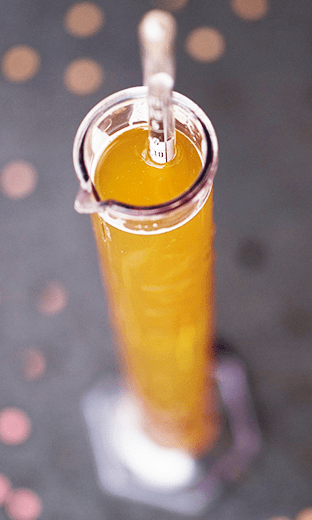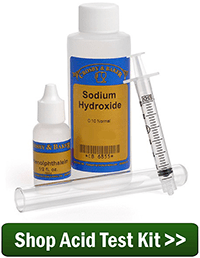 Hey guys!
Hey guys!
In my last blog post, I mentioned a couple of things that made me a little nervous about the status of my developing honey/mead wine. First, I don’t like the way it’s tasting at the moment (kind of yeasty and odd), but I’m not sure if this is due to a problem with the wine, or due to the fact that I don’t know what mead is supposed to taste like at this stage. Maybe it’s a little of both?
Second, I mentioned the issue of there being a lot of headspace right now, and my admission that due to my insane schedule and lack of confidence with this particular batch, I’m just going to leave it as is and hope for the best.
One thing I did not mention, which might turn out to be very important, is related to the specific gravity of the wine. According to the mead instructions, the specific gravity should be between 0.990 and 0.998 at the end of secondary fermentation. Well, when I measured the specific gravity right before I racked the wine the other day, it was 1.002 (with a temperature correction around 1.003—I guessed the temperature of the wine since I destroyed my last thermometer….oops).
Doing a brief search around the web, it seems as though people are suggesting to try racking the wine, and then maybe adding either a little acid or super ferment/yeast energizer to jump start the remaining yeast to finish the job.
 My concern with adding acid is that I have no idea what the acid levels currently are in my wine. A pH meter of sorts sounds like it would be a good investment at this point. I already have a food-grade acid blend and yeast energizer, so it’s all a matter of deciding which to add. The easiest thing at this point would probably be to add the yeast energizer, but if my wine is at the wrong pH, I would certainly want to fix that problem first. Looks like ECKraus has a lot of options available for testing pH, so I’ll add the Acid Test Kit to the list of things I need to order and hopefully get this problem straightened out.
My concern with adding acid is that I have no idea what the acid levels currently are in my wine. A pH meter of sorts sounds like it would be a good investment at this point. I already have a food-grade acid blend and yeast energizer, so it’s all a matter of deciding which to add. The easiest thing at this point would probably be to add the yeast energizer, but if my wine is at the wrong pH, I would certainly want to fix that problem first. Looks like ECKraus has a lot of options available for testing pH, so I’ll add the Acid Test Kit to the list of things I need to order and hopefully get this problem straightened out.
Finally, one teeny little thing that isn’t make-or-break with my wine but a little annoying to me was the fact that my new glass carboy (that I bought from a local homebrew place and not ECKraus) is a little taller than my ECKraus carboys, so the original racking cane that I bought doesn’t quite reach to the bottom of the carboy, leaving a little bit of perfectly good wine behind. After a quick search on the ECKraus site, looks like there are a bunch of options for longer racking canes, so I’ll add one of those to the list as well!
————————————————————————————————————-
 My name is Leigh Erwin, and I am a brand-spankin’ new home winemaker! E. C. Kraus has asked me to share with you my journey from a first-time dabbler to an accomplished home winemaker. From time to time I’ll be checking in with this blog and reporting my experience with you: the good, bad — and the ugly.
My name is Leigh Erwin, and I am a brand-spankin’ new home winemaker! E. C. Kraus has asked me to share with you my journey from a first-time dabbler to an accomplished home winemaker. From time to time I’ll be checking in with this blog and reporting my experience with you: the good, bad — and the ugly.

As far as racking canes go I prefer the auto racking cane to the conventional racking cane. It’s an automatic primer. All you have to do is pump the inner tube up and down a few times and your primed an siphoning without the mess.
Mead will taste anywhere from awful to quite good early in its life, but MEAD IMPROVES GREATLY WITH AGE. Generally, the better the mead, the longer it was aged. It is usually recommended to rack mead at least 5 times over a year during secondary fermentation – I usually do 6 (every 2 months, but let the sediment dictate, not the calendar). Then kill the yeast and sweeten, if desired, and bottle them. Tradition is that mead is bottled in bottles larger than 750 ml splits, and I notice that the heavy glass jugs sell best, although most of my market is comprised of Renaissance Pleasure Faire patrons.
Leigh – GET a new thermometer, and try to borrow pH meter before buying one.